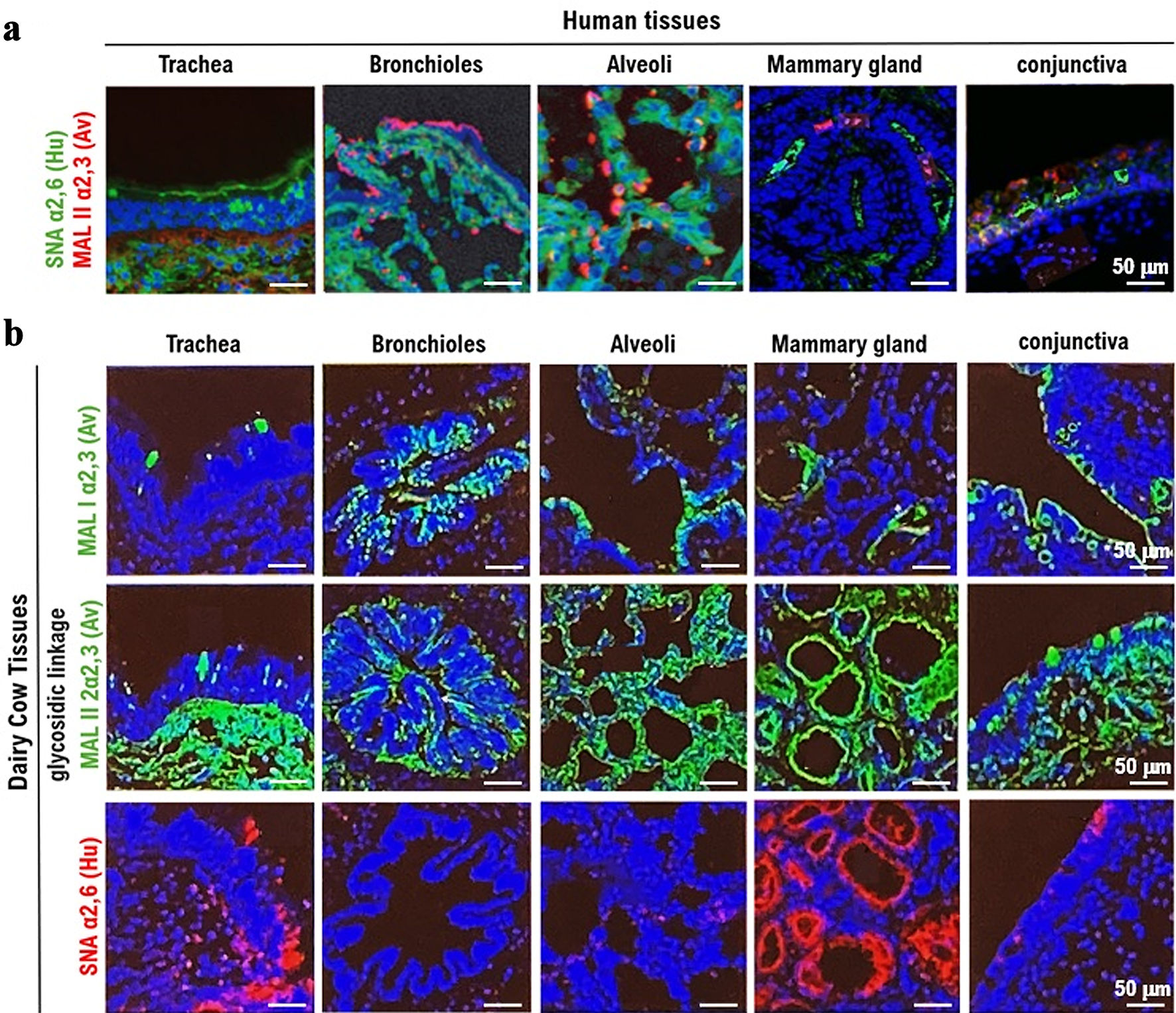Bovine H5N1 Hemagglutinin Could Bind Both Alpha-2,3-Linked Sialic Acid and Alpha-2,6-Linked Sialic Acid Expressed in Bovine and Large Feline Tissues, Suggesting a Zoonotic Threat
DOI:
https://doi.org/10.14740/cmmr104Keywords:
HPAIV H5N1, Influenza virus, Mammary grandAbstract
Background: Highly pathogenic avian influenza virus (HPAI/H5N1) has caused widespread infections in dairy cattle and poultry in the United States. Sporadic cases of human HPAI/H5N1 infections have also been confirmed. To prevent human HPAI/H5N1 infections and establish treatments for infected individuals, researchers at medical institutions in the United States are analyzing the biological characteristics of HPAI/H5N1 strains confirmed in the country from March to October 2024. In particular, health care staff at such institutions are investigating human infection with the HPAI/H5N1 virus. Confirmed cases mainly involved adults who have come into contact with infected animals. HPAI/H5N1 infection causes mild illness, such as conjunctivitis, and is short-lived. Most infected patients improve or are cured with early antiviral treatment. However, on January 7, 2025, the Louisiana State Health Department reported the death of a person believed to have been infected with HPAI/H5N1 through contact with captive or wild birds. Evidence of limited human-to-human transmission of influenza A (H5N1) (via close physical contact, for example within a household) has been suggested in previous outbreaks. To date, sustained human-to-human transmission of avian influenza A (H5N1) has never been observed globally.
Methods: Our research team compared the infectivity of the HPAI/H5N1 virus to humans and dairy cows through the molecular pathological analysis of mammary gland tissues obtained from humans and dairy cows and in silico examinations.
Results: The results revealed that more receptors for HPAI/H5N1 viruses were expressed in mammary gland tissues obtained from dairy cows than human mammary gland tissues. Furthermore, in silico analysis revealed that the HPAI/H5N1 virus obtained from infected dairy cows can infect humans. In other words, the backbone molecule of the HPAI/H5N1 virus may mutate within the infected host, resulting in infectivity to humans. Furthermore, molecular pathological analysis of respiratory tissue obtained from lions revealed the expression of both human (α2,6-linked sialic acid (α2,6SA)) and avian (α2,3-linked sialic acid (α2,3SA)) influenza virus receptors in lion respiratory tissue, as well as the expression of angiotensin-converting enzyme 2, a receptor for severe acute respiratory syndrome coronavirus 2.
Conclusions: H5N1 that infects dairy cows mutates within the host and becomes infectious to humans. Therefore, it is important for people to consider and implement measures to prevent infection of dairy cows with H5N1. Therefore, One Health guidelines including zoonotic disease should be emphasized to prevent HPAIV/H5N1 infection from becoming a pandemic.

Published
Issue
Section
License
Copyright (c) 2025 The authors

This work is licensed under a Creative Commons Attribution-NonCommercial 4.0 International License.






